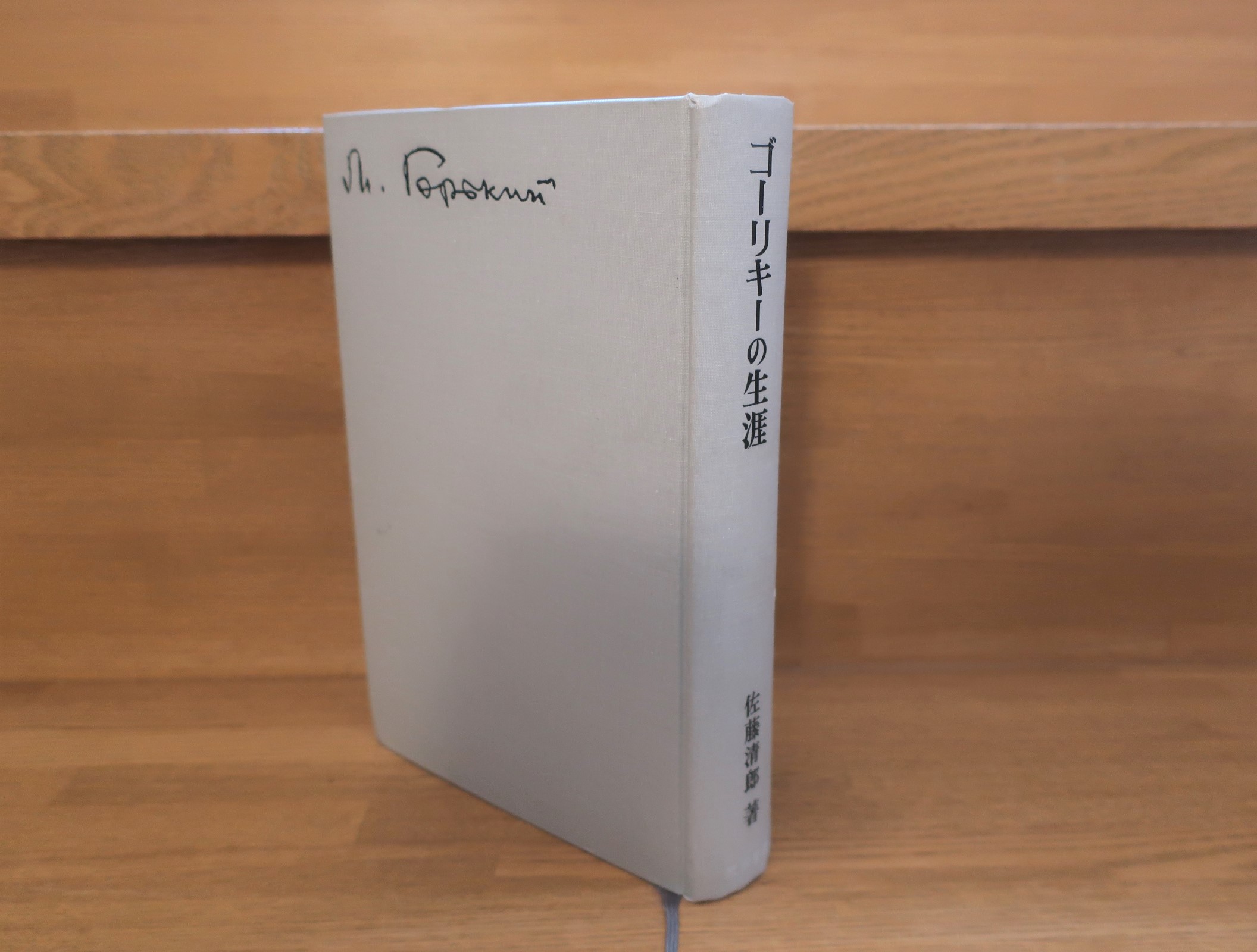Summary and Impressions of Seiro Sato's "The Life of Gorky" - A book to learn about the tumultuous life of one of the Soviet Union's most famous writers.
Seiro Sato's book, "The Life of Gorky," was published by Chikuma Shobo in 1973.
Mr. Seiro Sato is a member of theThe Life of Chekhov.andThe Life of Turgenev."He is a Russian literary scholar who left behind numerous works, including He has been a frequent contributor to my blog.
Mr. Sato published "The Life of Gorky" in 1973.
What makes this book unique is its thickness.

It is 576 pages in this size. It is a surprisingly detailed account of Gorky's life. I understand that Gorky lived a tumultuous life, but even so, this volume is amazing.
In the afterword, Sato says the following about the book
The present day somewhat resembles the "valley age" of this book. From chaos, apathy, despair, pleasure, decadence, complacency, indifference, violence ...... and the rampant use of various human activities to the prevalence of sex literature. At the beginning of the "Age of the Valley" there were whispers of Gorky's downfall, and at its end, the comeback was again eagerly awaited. One cannot chase valleys forever. We may have another era in which we will be inspired by Gorky, just as we were in the early Showa period.
Gorky has none of the scheming, back-stabbing, or side-stepping of politicians or professional revolutionaries. He always strikes out head-on, with a direct, physical approach. This is his weakness, but it is also his endlessly amiable humanity. This is what the literary spirit is all about.
To get at the essence of his literary spirit, one has no choice but to read his works. His early short stories, autobiographical novels, and essays on personalities have an eternal life. Even his works that are not necessarily considered successful have a unique flavor that is hard to put down when read in the original text. This is because each word is filled with the sensation of hot breathing. I wrote this book on the basis of this sense of breathing.
After finishing "The Young Gorky," I immediately began preparing to write this book, consulting as much material as I could get my hands on, taking notes, and compiling them one after another. I am not without emotion, as even in his native country, the Soviet Union, we do not yet have a sufficient biography of Gorky. I am not being too forward, but instead of bold inferences, there must be some steady discoveries here. The reason why I did not include bold inferences is that I tried to be as objective and empirical as possible in order to give the book its own value as a source of information.
Chikuma Shobo, Seiro Sato, Life of Gorky, p. 575
You can feel Mr. Seiro Sato's enthusiasm in writing this thick book.
The book describes Gorky's life in considerable detail from his childhood, but much of the information about the young Gorky, for whom public records are scarce, is based on autobiographical novels written by Gorky himself. For those who wish to know more about Gorky, we recommend reading his autobiographical novels, such as "Among the People.
This biography reveals how tremendously Gorky lived his life from an early age.
His masterpieceBottom of the Bottoms."was precisely because of his own experience of surviving at the bottom of the social ladder. It is amazing that he made it big as a writer from there. I was really surprised when I read this biography. He is no ordinary man.
This book is wonderful not only for learning about Gorky's life, but also for learning more about the social conditions and people's lives at the time. It shows how impoverished Russia was at the end of the Czarist regime, how people were living at the bottom of the heap, and how the world was going through a revolution. I felt again that the good thing about biographies is that you can learn not only about a person's life, but also about the world of the time.
Now, while this book is a good way to learn about Gorky's life, there is one thing to keep in mind.
Gorky had fairly close ties to Stalin in the Soviet Union and worked as a Soviet propaganda writer in his later years. This means that Gorky was consequently complicit in Stalin's great terrorism.
In 1973, when this book was written, the Soviet Union was still in existence, and no material inconvenient to the Soviet Union was on the table. Therefore, this book does not describe the situation in this area very well.
In the next article, we will introduce Gorky in "Biography of Stalin," based on new documents that came out after the collapse of the Soviet Union, so we hope you will take a look at that as well.
Sato's biography is a very interesting way to learn about the process by which Gorky became a great writer. It is a huge volume, but I highly recommend it.
The above is "Seiro Sato, "The Life of Gorky" - The tumultuous life of a leading Soviet writer.
Next Article.
Click here to read the previous article.
Related Articles





































